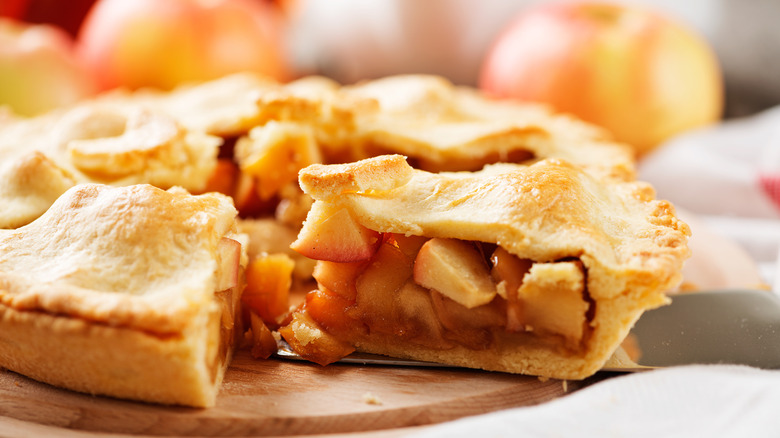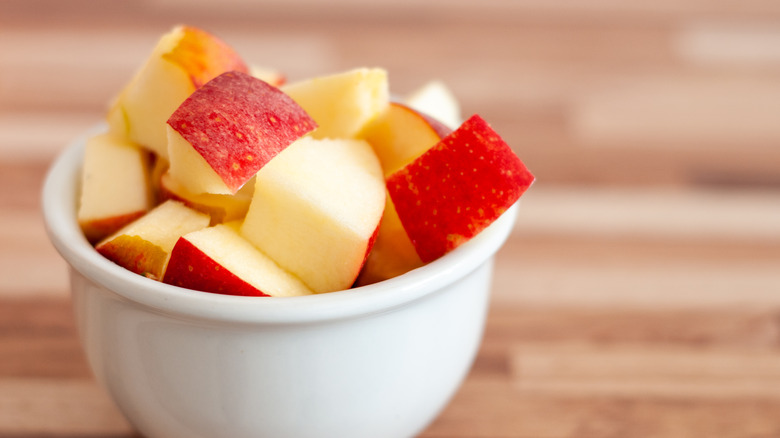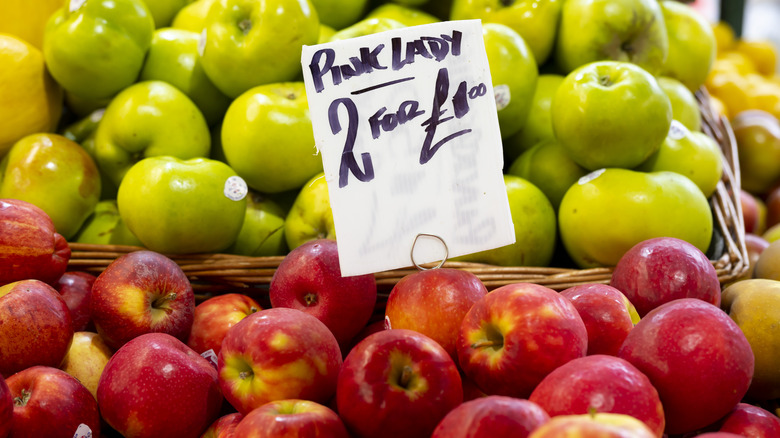The Simple Way To Upgrade Homemade Apple Pie
You can find apples at the grocery store all year round these days, but nothing beats the autumnal thrill of gathering your own haul from the vines of your nearest U-Pick — or, if you're lucky, from the tree in your backyard. Apples tend to run in high supply, which is why you might come home with more than you know what to do with. Recipes that call for copious amounts of fruit, such as apple butter, are a good way to make a crate's worth of apples disappear. But if you find yourself with a more modest crop, there are few applications that rival the comfort and universal appeal of homemade apple pie.
Like all good comfort food, no family recipe for apple pie is exactly the same. Some might call for a specific apple variety. Some might favor a latticed top crust, while others might prefer to drape a sheet of pie dough over the filling for a craggy, sugar-burnished look with fanciful scoring. But no matter what your great-grandmother's lovingly handwritten apple pie steps dictate, you might want to employ this flavor-enhancing trick next time.
It's all about the juice
A good crust can make or break your apple pie, but the real star of the show is the apple filling, which turns from tart and crisp to soft, sweet, and juicy in the oven. That juice is where the flavor is, but it can also turn on you and soggy up your dessert. But there's a simple trick to take your apple pie to the next level.
In its rundown of ways to prevent soggy pie, King Arthur Baking Company says to start by making a filling with sliced apples, sugar, and lemon juice — of course, you can follow whatever first steps you (or your grandma) see fit. After that, the trick is to let the juices trickle out for "an hour or so" at room temperature. Just like the juice that seeps from an eggplant after it's been salted, the seasoned apples will release a good deal of their water during this period of downtime.
If you have the time, your apples would benefit from a second hour-long sitting. When that second timer goes off, the last thing you want to do is discard the liquid. Instead, you'll add it to a pot and reduce it by about half, until it reaches a syrupy consistency. At this point, you can mix the reduction into your apple filling and arrange it in its shell for an intense apple-y flavor.
Choosing your apples
More than 200 varieties of apples are grown in the United States, with new ones being added all the time, per Agricultural Marketing Research Center. According to the USApple Association, the 10 most popular varieties are Red Delicious, Gala, Granny Smith, Fuji, Golden Delicious, Honeycrisp, McIntosh, Rome, Cripps, Pink/Pink Lady, and Empire, though you may prefer underdogs, like the newly introduced Cosmic Crisp.
With so many apple varieties to choose from, it can be overwhelming to decide which kind to use for your pie. We're partial to a tangy green Granny Smith, but some prefer the classically sweet taste of red apples. Food writer and recipe developer Aaron Hutcherson shared a few of his favorites with The Washington Post, in which he suggests using a few different varieties to yield "complex flavors and textures."
Among his picks is the Braeburn, a descendent of Granny Smith that he says "tastes almost like a pear when cooked." He also heralds the Golden Delicious for its accessibility and flavor, along with Honeycrisp, Jonagold (a Jonathan and Golden Delicious hybrid), and Granny Smith.


